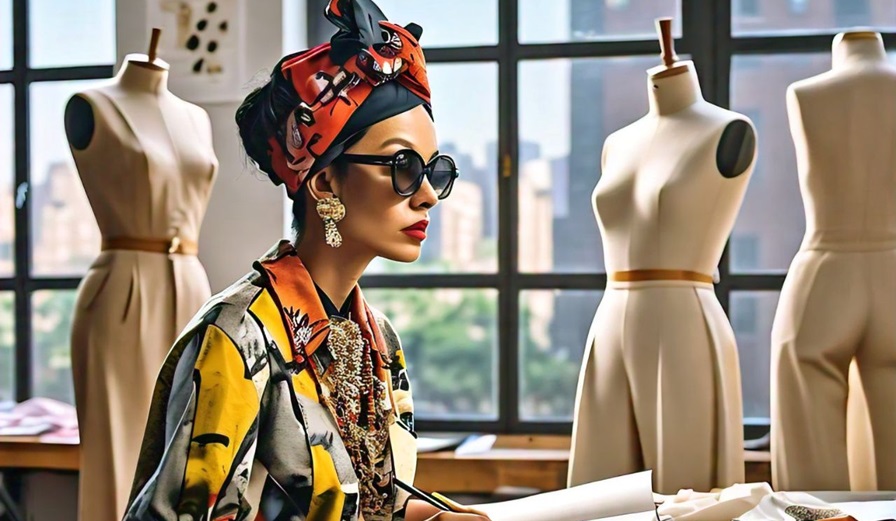Fashion Designer Salary
Fashion designing is a dynamic and creative field that has gained significant traction in India. The fashion industry is ever-evolving, providing numerous opportunities for designers to explore their creative abilities and make a name for themselves. One of the most frequently asked questions among aspiring designers is: how much does a fashion designer earn in India? This article delves into the various aspects that affect a fashion designer’s salary, providing insights into average pay, factors that influence earnings, and the growth prospects within this career.
Table of Contents
Average Salary of Fashion Designers in India
The salary of a fashion designer in India can vary widely based on factors like experience, skillset, the city of employment, and the type of industry they work in. Here’s an overview of the average salary:
- Entry-level fashion designers typically earn between INR 2.5 lakhs to 4 lakhs per annum. Fresh graduates from reputed fashion schools may find opportunities that pay slightly more, particularly if they join established brands.
- Mid-level fashion designers, with around 4-6 years of experience, can expect to earn between INR 5 lakhs to 10 lakhs per annum.
- Senior fashion designers who have over 8-10 years of experience can earn INR 12 lakhs to 20 lakhs per annum or more, depending on their expertise and the brand they are associated with.
- High-end designers who have carved a niche for themselves in the market or work for luxury fashion houses can command annual salaries exceeding INR 20 lakhs.
Freelance designers or those who have their own boutiques may see varying earnings, which can range from INR 3 lakhs to over INR 50 lakhs per year, depending on the demand for their designs and the scale of their operations.
Factors Influencing Fashion Designer Salaries

Several factors can influence the earnings of a fashion designer in India. Understanding these can help aspiring designers make informed decisions about their career paths:
1. Experience
- Experience is a key determinant of a fashion designer’s salary. Freshers generally start with lower pay, but as they gain experience and establish their portfolios, their earning potential increases significantly.
- Internships and practical experience during college can help boost starting salaries as they provide exposure to the industry.
2. Educational Background
- Graduating from a reputed fashion institute like the National Institute of Fashion Technology (NIFT), Pearl Academy, or Symbiosis Institute of Design can give designers a head start in their careers.
- Employers often prefer candidates with formal training and degrees in fashion design, and are willing to pay higher salaries to those who have studied at prestigious institutes.
3. Location
- Salaries differ considerably based on the city of employment. Fashion hubs like Mumbai, Delhi, and Bangalore offer higher pay due to the concentration of fashion houses, retail brands, and opportunities.
- Designers working in smaller cities or towns may find fewer opportunities and a lower average salary, but they can benefit from lower living costs.
4. Industry Type
- Fashion designers can work in varied sectors like retail fashion brands, export houses, textile mills, film industry (costume design), or as independent designers.
- Those working in high-end fashion houses or luxury brands tend to earn substantially higher salaries compared to those in smaller, mass-market retail companies.
5. Specialization and Skills
- Designers who specialize in niche segments like bridal wear, sustainable fashion, or high-street fashion can command better pay packages.
- Skills such as pattern making, digital design software proficiency (e.g., Adobe Illustrator, CorelDRAW), and fabric knowledge can also enhance earning potential.
How Do Different Job Roles Affect Salaries?
In the fashion industry, a designer’s role can vary significantly, each with its own salary expectations. Here are some of the common job roles and their approximate pay:
- Fashion Illustrator: A fashion illustrator creates the initial designs and sketches. Their average salary can range from INR 3 lakhs to 6 lakhs per year.
- Textile Designer: Specializing in creating unique fabric patterns, textile designers may earn between INR 3 lakhs to 8 lakhs per annum.
- Fashion Merchandiser: Fashion merchandisers focus on understanding market trends, pricing, and managing product displays. Their salaries typically range from INR 4 lakhs to 9 lakhs per year.
- Costume Designer: Working in the film and television industry, costume designers may earn between INR 4 lakhs to 15 lakhs per annum, depending on the projects they are involved in.
- Fashion Consultant/Stylist: Those who provide personal styling services or work with brands to shape their aesthetic can expect salaries ranging from INR 5 lakhs to 12 lakhs per annum.
Salary Trends in the Fashion Industry

The fashion industry in India has been growing steadily, creating numerous opportunities for designers. Here are some salary trends and growth prospects to consider:
1. Impact of E-commerce and Digital Platforms
- The rise of e-commerce has expanded opportunities for designers, as many fashion brands have moved online. This has opened doors for digital fashion designers and those specializing in e-commerce styling.
- Designers working with online retail brands may find salaries ranging from INR 3.5 lakhs to 8 lakhs for entry-level positions, while more experienced professionals can earn significantly higher.
2. Growth in Sustainable Fashion
- With the increasing focus on sustainability and eco-friendly fashion, designers who specialize in upcycled, organic, and ethical fashion are in demand.
- Such designers may command a premium for their specialized skills, and senior professionals in this field can earn over INR 15 lakhs per annum.
3. Rise of Independent and Freelance Designers
- Many designers are choosing to work freelance or start their own boutiques and labels, allowing them to set their rates based on their popularity and client base.
- While the income of freelancers can be inconsistent, those with a strong social media presence and unique design style can achieve substantial earnings.
4. Influence of Bollywood and Media
- Costume design for movies, TV shows, and web series remains a lucrative segment in India. Designers who establish themselves in the entertainment industry can earn upwards of INR 10 lakhs per project, depending on the scale of the production.
How to Boost Your Salary as a Fashion Designer
For those looking to increase their earnings as a fashion designer, here are some effective strategies:
- Build a strong portfolio showcasing a variety of designs, including sketches, digital illustrations, and completed projects.
- Network within the industry by attending fashion shows, workshops, and industry events. Connections can lead to better opportunities and collaborations.
- Enhance your skills by learning digital design software, gaining knowledge of the latest fashion trends, and understanding consumer behavior.
- Consider working with top brands to gain experience before venturing into independent design.
- Social media can be a powerful tool for fashion designers. Building a strong online presence can attract clients and collaborations that boost income.
Conclusion
The salary of a fashion designer in India is influenced by numerous factors including experience, education, location, and the sector in which they work. While entry-level designers may start with a modest income, the potential for growth is significant, especially for those who build a strong reputation and specialize in niche areas. Whether working with established brands or branching out as independent designers, the fashion industry offers diverse opportunities for creative individuals. By continuously honing their skills and staying updated with market trends, designers can achieve rewarding careers with lucrative salaries in India.
Also read – Merchant Navy Salary Structure by Rank in 2024






